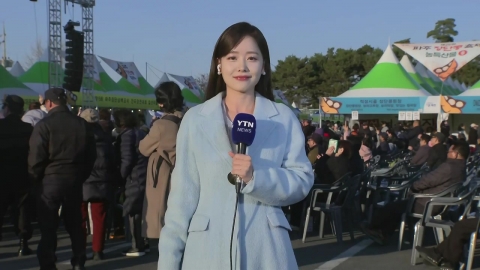Hundreds of millions of light-years away in galaxy clusters and stars clearly captured
European Space Agency Reveals 1% Target...Captured 14 million galaxies
Create a three-dimensional space map to explore 95% dark matter and energy.
The European Space Agency, which launched the Space Telescope Euclidean last year, has unveiled a part of the 208-giga-pixel space map for the first time.
The plan is to create a space version of "Google Earth" to unlock the secrets of space darkness.
I'm reporter Jang A-young.
[Reporter]
This is our galaxy captured by the Gaia Space Telescope.
It is a space map created by capturing the position and color of the celestial body at the second Lagrange point, which was launched in 2013, by Gaia.
Last year, a Euclidean space telescope with better resolution flew to the spot where the Gaia telescope is located.
For the first time, 1% of the 208-giga-pixel, 208-billion-pixel ultra-high-resolution space map has been released.
Zooming to 36 times clearly shows the Abel 3381 galaxy cluster 678 million light-years away from Earth,
If you zoom in by a factor of
150, you'll see two spiral galaxies 420 million light-years away interacting.
Even blue cosmic clouds of gas and dust, 14 million galaxies have been captured, even though they are only 1% small pieces.
[Bruno Altieri / Euclid Archive Scientist] What we're trying to build is similar to Google Earth in the universe, so that anyone can look at the universe in the future and see billions of galaxies that we're going to map.]
The ultimate goal is to reveal the true nature of dark matter and dark energy, which make up 95% of the universe.
The plan is to calculate dark energy through a 'gravitational lens' phenomenon in which the light of the celestial body is distorted by the gravity of other celestial bodies.
[Seshadri Nadatur / Professor of Cosmology at the University of Portsmouth] The mystery has been known since the late 1990s, and it's not only expanding, it's expanding faster. We need to find out whether this dark energy is constant or changing with time and evolving with time.]
Euclid will spend six years combing a third of the sky beyond our galaxy, which has been left in the dark.
I'm YTN's Jang Ayoung.
Video editing: Lee Young-hoon
Design: Lee Ga-eun
Source: European Space Agency (ESA)
※ 'Your report becomes news'
[Kakao Talk] YTN Search and Add Channel
[Phone] 02-398-8585
[Mail] social@ytn.co.kr
[Copyright holder (c) YTN Unauthorized reproduction, redistribution and use of AI data prohibited]
Science
More- Make eco-friendly aviation oil from discarded and inedible plant ingredients
- "Korea should clarify where nuclear power plants are responsible"...IAEA recommendations
- "Korea should clarify where nuclear power plants are responsible"...IAEA recommendations
- "Hehehehehehehehehehehehehehecheesecheesecheesecheesecheesecheesecheesecheekcheekcheekcheekcheekcheekcheekcheekche



![[Reporting Y] "Light" is right in front of the exam.a massive cancellation of qualifications](https://image.ytn.co.kr/general/jpg/2024/1123/202411230506345528_h.jpg)
![[Yetterview] "University War Season 2" The True Taste of Brain Survival Overcrowding Controversy](https://image.ytn.co.kr/general/jpg/2024/1123/202411230900011387_h.jpg)
![[YTERVIEW] "The best song is 'Dreams of Octopus'". Thank you, children".](https://image.ytn.co.kr/general/jpg/2024/1123/202411230800271881_h.jpg)



